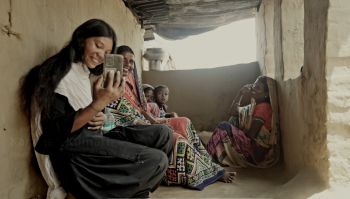News article
Pratik Mishra: Working to bring attention to those labouring under extreme heat in India
By: Heather Stanley
Last updated: Thursday, 25 September 2025

Pratik surveyed 100 brick kiln workers near Delhi to see how extreme heat affects workers' labouring lives and incomes.

The exploitative kiln labour regime is marked by conditions of debt bondage, low piece-rate wages, long-term migration and employment of family labour.

Pratik is also involved in an occupational heat stress research-cum-intervention project in a garment factory in Noida
Dr Pratik Mishra is a British Academy-funded Postdoctoral Research Fellow working within the Department of Anthropology, Faculty of Social Sciences at the University of Sussex. His work concerns rising heat in India and what it means for workers in precarious labouring conditions. He is co-directing a documentary movie 'We don't see the sun or the night' on the labouring lives of migrant brick kiln workers in India.
Geert De Neve, Professor of Social Anthropology & South Asian Studies and Pratik’s Mentor, said:
“Pratik’s groundbreaking research on labour, heat stress and climate change in India’s brick kilns exposes the impacts of rising heat on labouring bodies, especially those of indebted migrant workers. His postdoctoral project, based in the School of Global Studies, enables him to extend this research into other industrial sectors and to explore interventions that can lower heat stress, protect working bodies and enhance productivity at the same time.”
Pratik recently carried out a survey with over 100 brick kiln workers near Delhi on how extreme heat affects workers' labouring lives and incomes, in a situation where the exploitative kiln labour regime is already marked by conditions of debt bondage, low piece-rate wages, long-term migration and employment of family labour. Pratik has had a number of journal articles published on this research (see below).
Explaining how he became interested in the topic, Pratik explained:
“My ethnographic work with brick kiln workers in India began from my observation of how immediate and consequential the climate crisis is for them: hot summer days, sweltering nights and irregular, extreme bouts of rainfall which imposes idle time during which they cannot earn. It was from this empirical standpoint that I started to question the science and policies around occupational heat stress, particularly the dominant physiological-meteorological basis of knowledge.
“My aim is to push for qualitative and ethnographic knowledge - such as from the established corpus on the anthropology of work - to be integrated into current policies on regulation and climate action to protect vulnerable workers.”
In partnership with Ethical Trading Initiative and a multinational garment brand, Pratik is also involved in an occupational heat stress research-cum-intervention project in a garment factory in Noida, a modern, planned city in the Uttar Pradesh state of northern India known for its IT and business hubs and modern infrastructure. For the research, workers wear core body temperature sensors to show how heat exposure is distributed spatially, temporally, and across occupations within the garment factory. Different low-cost interventions are being trialled to lower heat stress while researchers analyse the effects of heat stress versus productivity. A “heat action plan” will ultimately be developed in liaison with the supplier-factory, workers organizations and the garment brand.
Pratik is also engaged with advising prominent labour-centered civil society organizations in India - such as the Work Fair and Free Foundation, and the Society for Labour and Development (SLD), India - on their engagement with heat stress and informal labour in India.
_______________________________________________________
Two of Pratik’s articles concerning his research on brick kiln workers in Delhi include:
Parsons, L., de Campos, R. S., (...) Mishra, P., … Billah, T. (2024). Globalized Climate Precarity: Environmental Degradation, Disasters, and the International Brick Trade. Annals of the American Association of Geographers, 114(3), 520–535.
Mishra, P. (2023). Surplus population in-situ: Brick kiln labor and the production of idle time. focaal, 2023(97), 49-62. Retrieved Sep 5, 2025.